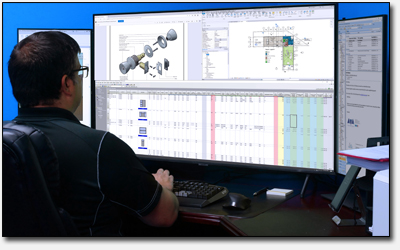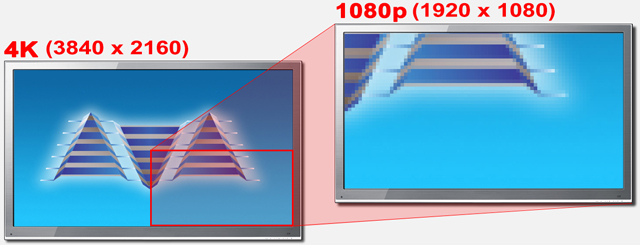|
Extra-large monitors provide a luxurious experience for AVAproject users.
When working with openings schedules, screen width is definitely a priority. The very nature of these schedules necessitates the constant references of any number of columns in every phase of the work flow, from take-off to detailing. AVAproject contains a number of useful features to assist in organizing this often overwhelming wealth of data. The ability to modify column positions easily, and maintain a list of commonly used layouts allows the user to more easily manage the number of columns they need to deal with at any given moment. Even still, users must be resigned to a certain amount of horizontal scrolling to access the information they need or to populate all the data columns required.
It's for this reason that many users have discovered the tremendous advantage offered by many ultra-wide monitors and televisions available today. The only remedy for endless horizontal scrolling is screen real estate. The wider the monitor - the greater the amount of data that can be seen at a glance.
Ultra-Wide Displays
Ultra-Wide computer monitors have become increasingly popular with PC gamers in recent years as an alternative to multiple monitor setups. They provide the all-important screen real estate without the separation that comes with having separate panels, allowing for uninterrupted views into virtual worlds.

For those whose days revolve around the use of massive spreadsheets, the ultra-wide aspect ratio becomes a means to see the extents of their data in a single glance. With the entire openings schedule visible at once, the entire process from take-off through estimating and detailing becomes considerably more efficient.
Ultra-Wide Displays and Beyond

| If an ultra-wide monitor is better, then an ultra-wide monitor that is also extra tall must be better still. An increasing number of AVAproject users have discovered the luxurious experience of utilizing a 4K television as a computer monitor.
These displays are capable of displaying as much content as up to four typical computer monitors. The effect is compelling. With an entire openings schedule sprawled across the bottom of the screen, there is still room for two monitors worth of data (blue prints, architects' schedules, etc.) to be simultaneously viewed directly above.
This is the digital equivalent to the extra-large drafting tables used by so many project managers in the days of massive printed rolls of blue prints. |
Selecting a Display
When selecting an extra-large monitor, it's important to remember that physical screen size isn't everything. It's all about the pixel density, commonly known as resolution. A 50" standard high-definition television capable of displaying only 1080p (1920 x 1080 pixels) will provide less room for content than a 24" computer monitor with a resolution of 2560 x 1440 pixels. In fact, the appearance of text will actually be worse on the larger screen when viewed up close. There is, in fact, less content being displayed on the larger screen in this example - the individual pixels are simply larger resulting in a more "jagged" (or "pixelated") appearance.
The current proliferation of low cost 4K televisions provides an excellent opportunity to consider one of them as an alternative to a conventional computer monitor. A "4K" television actually contains 4 times the pixels of its 1080p (commonly referred to as "2K") counterparts. The image size is actually twice in both the horizontal and vertical directions, resulting in a total pixel count of 3840 x 2160.

While there is certainly nothing from preventing someone from using even larger displays than the 50" suggested, there does come a point where the sheer size came become overwhelming or even uncomfortable. Given a reasonable set back from the user's position at the desk, 50" appears to be the optimal size for the best experience.
|